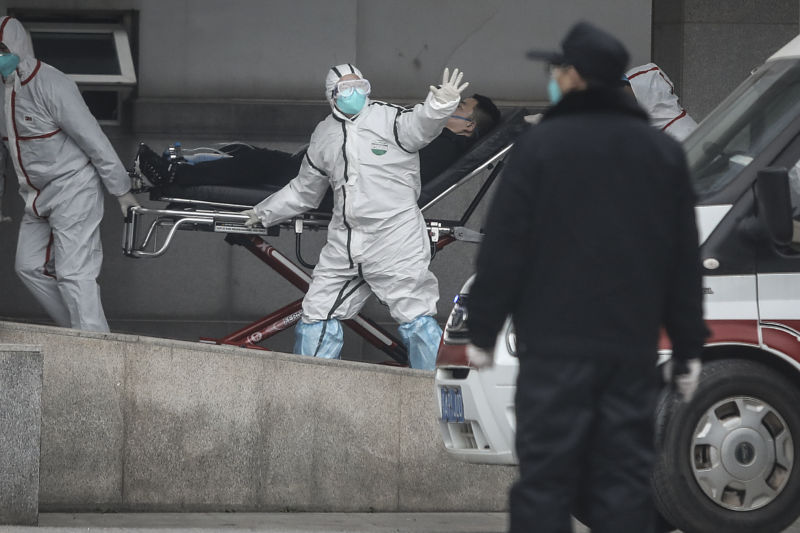Long haul —
Fatigue, sweating, chest tightness, anxiety and myalgia were most common.

Enlarge / Medical staff transfer patients to Jin Yintan hospital on January 17, 2020 in Wuhan, Hubei, China.
Among thousands of the earliest survivors of COVID-19 in Wuhan, China, nearly half had at least one persistent symptom a full year after being released from the hospital, according to a new study published in JAMA Network Open.
The study followed up with 2,433 adult patients who had been hospitalized in one of two hospitals in Wuhan early on in the pandemic. Most had nonsevere cases, but a small number had severe COVID-19 and required intensive care. All of the patients were discharged between February 12 and April 10, 2020, and the study follow-up took place in March of 2021.
Overall, 45 percent of the patients reported at least one symptom in that one-year follow-up. The most common symptoms were fatigue, sweating, chest tightness, anxiety, and myalgia (muscle pain). Having a severe case of COVID-19 increased the likelihood of long-lingering symptoms; 54 percent of the 680 severe cases reported at least one symptom after a year. But persistent symptoms were also common among the nonsevere cases, with 41.5 percent of 1,752 nonsevere cases reporting at least one symptom a year later.
The data echo that of other studies, which have also found that it is not rare for people with milder cases of COVID-19 to experience persistent symptoms. A small Norwegian study published by Nature Medicine in June found 55 percent of 247 nonhospitalized patients with mild-to-moderate disease had persistent symptoms six months after testing positive. A UK study involving 273,618 COVID-19 patients noted that more than half of nonhospitalized patients reported features of long-COVID within a six-month follow-up period. That study was published earlier this week in PLOS Medicine.
Multisystem attack
Still, in the new study as well as the others, severe disease was a significant risk factor for having any persistent symptoms—and also more than three symptoms. Older age and being female also increased the risk of persistent symptoms.
Researchers and medical experts have yet to fully understand why COVID-19 causes long-term symptoms and why symptoms strike some patients and not others. The authors of the latest study highlight the multisystem nature of the infectious disease.
“COVID-19 can affect multiple organs, which leads to both acute organ damage and long-term sequelae, with the latter effects gaining increasing concerns,” they write. In particular, they note that fatigue was the most common persistent symptom identified—something backed up in other studies. Fatigue is common after acute lung injuries but could also be the consequence of multiple organ injuries. The researchers also highlighted that about 4 percent of patients still reported heart palpitations a year later, pointing to possible long-term damage to the cardiovascular system. Cardiovascular complications are a known risk of COVID-19, including inflammation of the heart muscle (myocarditis).
The study does have limitations, though. It does not have a control group, and the researchers were unable to contact everyone who was discharged from the hospital during the studied time period. This could create biases in the data based on those who were able or willing to participate in the follow-up. The study also only looked on early in the pandemic before the emergence of any variants, which could have different long-term effects.
Still, the findings are largely in line with other studies. The authors conclude that “taken together, our research suggests that the health consequences of COVID-19 extend far beyond acute infection.”
Note: This article have been indexed to our site. We do not claim ownership or copyright of any of the content above. To see the article at original source Click Here












